Complete Training System For Industrial Electrical And Electronic Controls, Measurements And Drives
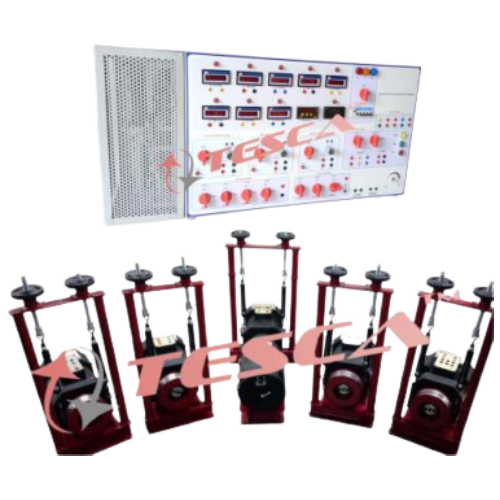
Order Code: 22235521.2.33
Category: General Lab Equipment I
System that allow the study of Industrial Electric commands, Electrical and Electronic Drives and Measures Industrial Electrical for various levels of knowledge. With tools that enable the complete measurement of electrical parameters, simulation of ...
SPECIFICATION
System that allow the study of Industrial Electric commands, Electrical and Electronic Drives and Measures Industrial Electrical for various levels of knowledge. With tools that enable the complete measurement of electrical parameters, simulation of circuits of electrical controls, as well as maintenance studies in industrial electrical systems.
The study topics of this system are:
- Concepts in Electrical Command
- Electrical Command Devices
- Diagrams of Electrical Circuits
- Assembly of Electrical Circuits
- Industrial Electric Motors
- AC Motors Direct Start
- Industrial Electrical Measurements
- Analog / Digital Instruments
- Practices with Measuring Instruments
- Softstarter (operation and practice)
- Inverter (operation and practice)
- Servoconverter (operation and practice)
- Micro PLC (operation and practice)
- Integration of Drivers with Micro PLC (practice)
Together with the hardware, the system includes a simulator software that provides for each topic addressed a theoretical synthesis, proposed objectives, average duration of the activities and more. In several cases, provides integration with hardware allowing the acquisition of data, generation of graphics, communication in real time with the real components of the system and also virtual. To guide the user during the development of the practical activities, the software provides an introduction, the objectives and also the average execution time for the chosen theme. It also has a list of all the material necessary for the execution of the practice and a step-by-step towards a complete orientation. At any time, the mentor can directly access or allow the user to view the resolution of the practice activity. The simulator allows the assembly of various practices available in the installation rack buildings and residences. Using the software, the user gets used to the hardware and performs the assembly of the experiments in an agile and safe manner. This reinforces the knowledge of each individual component and develops the ability to interconnect between them.
General Information:
It is a teaching system that allows the study of electric controls, electric machines, electric and electro-electronic drives and industrial electrical measurements. The system consists of hardware, software and printed teaching material. Its industrial components enable students to learn what they will find in the manufacturing environment in a practical way. This system covers everything from classic experiments such as direct motor startup to more complex levels by controlling drive drives via a Programmable Relay.
Rack Structure:
It is a hardware system through a rack with approximate dimensions of 1200mm (length) x 560mm (width) x 820mm high. The rack's power supply is 220 VAC three-phase through a power connector with maximum current capacity, compatible with the system. Also available are 4 220VAC sockets, with fuse and respective on/off button for computer power and/or other equipment that can be used near the rack.
Components:
All components in the system are mounted on a high-strength panel inside the rack frame. The following is a list of components that are part of the teaching solution: 01 Three-phase circuit breaker, Fuses Diazed (3 fuses), 01 analog cosifmeter, 01 analog Watt meter, 01 analog phase sequence meter, 01 analog AC voltage meter, 01 analog AC current meter, 01 programmable relay (90 to 240 VAC supply) with 12 digital inputs and 08 digital relay outputs, 01 emergency button with one NO and one NC contact, 02 push button on/off command buttons (one green and one red) with 2 NO contacts and 2 NC contacts on each button, 01 retentive control button (black) with 2 NO contacts and 2 NC contacts (all buttons are industry standard 22mm), 01 digital counter, 01 thermal relay, 03 LED 220VAC (industry standard 22mm) signals (one green, one red and one yellow), 03 220 VAC timers, 06 power contactors, being each contactor with 2 NO contacts and 2 auxiliary NC contacts, besides the power contacts, 01 frequency inverter with electrical characteristics compatible with the AC electric motor (both with three-phase 220 VAC power, compatible with the rack), having the following technical characteristics: 4 digital inputs, 2 digital outputs (one transistor output and one relay output), 1 analog input and 1 analog output, communication via RS-485 with built-in Modbus-RTU, 10Vdc and 24Vdc power supplies and must also allow Ladder language programming. This includes the supply of the inverter software that makes it possible to change, monitor and graphically display the inverter's variables. In addition to this software, it is included with the inverter, software that allows the user to implement logic projects equivalent to programmable logic controller at least in Ladder diagram. A Soft Starter that is compatible with the AC electric motor and has the following technical characteristics: IP20 degree of protection, including safety against overcurrent, phase failure, reverse phase sequence, power sink overtemperature, motor overload, blocked rotor, out-of-range frequency and undervoltage in the electronics supply, 2 isolated programmable inputs and 1 relay output. A servo converter compatible with the servomotor and has the following technical characteristics: parameterization via keyboard with 7-segment display, access to functions via digital and analog inputs and outputs, DeviceNet communication protocol and built-in PID function. All components in the system provide access to their connection terminals via standard 4 mm safety terminals. All components are accompanied by silk-screen printing with the standard symbol. When accessing the control signal points of the inverter, servo inverter and programmable relay, the standard is 2 mm safety to protect them. All components are for industrial use. Also included is a cable set (standard 2mm and 4mm both safety), with the respective quantities for carrying out all experiments.
Accessories:
To complement the system the following equipments are supplied: 01 pliers ammeter, 01 three-phase AC 220 VAC electric motor of ¼ CV, 01 Dahlander motor and 01 Servomotor. The rack also has a module of insertion of faults of easy access to the teacher providing 12 defects, these can still be activated simultaneously. The rack also provides a power system and on/off command buttons and power signaling directly coupled to its structure.
Didatic Material:
It consists of a set of manuals containing theory, practice and a set of tests. In the case of practice has a step by step of all steps to guide students and also photographs, indicating the physical locations of the components. All the experiments contain the details of the proposed objectives, average time of execution of the tasks, sequence of implementation, as well as step by step containing photos of the parts of the product to help students and review questions at the end of each subject. All handouts have a student and teacher version. In which the teacher's version already has all the resolutions of the experiments and review questions. The material addresses mainly the following study topics: Concepts in Electrical Commands, Electrical Command Devices, Diagrams of Electrical Circuits, Assembly of Electrical Circuits, Industrial Electric Motors, Direct Start of AC Motors, Industrial Electrical Measurements, Analog / Digital Instruments, Practices with Measuring Instruments, Softstarter (operation and practice), Inverter (operation and practice) and Servoconverter (operation and practice).
Teaching Mehodology:
The software has a design or photo showing all the components in the rack, in which the user can access a description of each item and also their respective symbology; has an area of practical tests, in which students can view, introduction, a theoretical synthesis of the subjects covered in the test, list of materials needed to perform the test, test objectives, average execution time, skills and abilities to be acquired, step by step throughout the test with images of the rack describing the calls that need to be made and complete resolution of the password protected test for use only by the teacher; has direct communication with the rack demonstrating measurements in real time of the following electrical parameters: voltage and current per phase and between phase and neutral, apparent, reactive and active power and frequency. All the mentioned values are displayed in graphs of the type: electrical parameter x time, and there is also the possibility of generating a report of the measurements taken, which can be exported to text or spreadsheet software. All the above-mentioned functionalities of the software that require direct communication with the workbench, occur through a standard USB cable, a cable is supplied together with the appropriate driver.
Electrical Command Simulation Software:
Allows the simulation of electric control circuits, as well as the starting of AC and DC electric motors; the main components that are part of your library are: 2 position switches, 3 position switches, NO/NC contacts, timers with off-delay NO/NC contacts, on-delay NO/NC contacts, on-off delay NO/NC contacts, push-button with NO/NC contact, NO/NC switches, thermal circuit breaker, DC motor, single-phase motor, three-phase motor, lamps, - earth, single-phase source, two-phase source, three-phase source, neutral, transformer and end of stroke; has real-time simulation functionality, indicates, in particular, the current path and the state of the electrical components in the control and power circuit. It has simulation buttons: run, pause, stop.
The experiment must be complete, with all necessary hardware, software, experimental and device manuals and accessories to perform the experiments. It must include extensive practical literature, with detailed descriptions of the experiments.
The experiment set must have a manual accessible via QR Code through an online portal for the management of experiments and devices that allows overview of the total inventory of the educational resource collection, e.g. with number, article name, inventory number, storage location; overview of all experiments possible with the collection of educational materials or a special device; installation and management of the individual storage structure such as premises, cabinets, shelves and trays, also with deposited images; inventory of the complete teaching material collection with indication of the storage location; inventory of device sets, which in turn consist of several individual devices; inventory also using internal school inventory numbers or with individual barcodes, also for distinguishing identically constructed devices. Inventory also indicating the availability of a device, e.g. available, borrowed, defective; generation of individual barcodes for label printing; support of standard barcode scanners, tablets and smartphones for automated access to devices; administration also of own articles or articles of foreign manufacturers, including description, pictures, documents, media and comments; import of existing inventory lists; access to instruction sheets, experiment descriptions, safety data sheets and other media - expandable with your own documents; creation and documentation of own experiments with corresponding hints, pictures and comments; creation and export of inventory lists with indication of number, article name, storage location, status, inventory numbers and comments, e.g. in Excel or LibreOffice; creation and export of experiment lists, which are feasible with the collection of teaching aids taking into account the availability of the individual devices, e.g. in Excel or LibreOffice; creation of the device lists of an experiment with the indication of number, article description and storage location, e.g. as PDF for printout; creation of an up-to-date list of hazardous substances with designation, danger symbols and storage location of the hazardous substance.

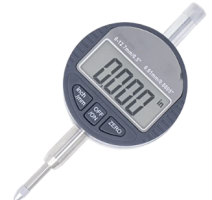
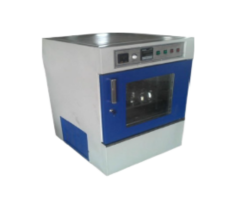

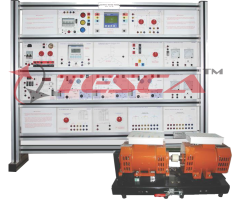
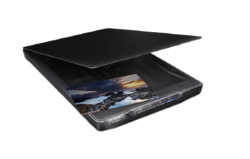
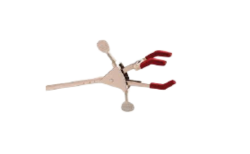
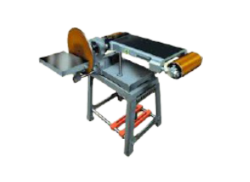
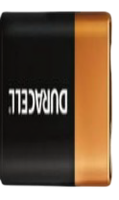
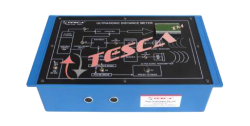

 91-9829132777
91-9829132777